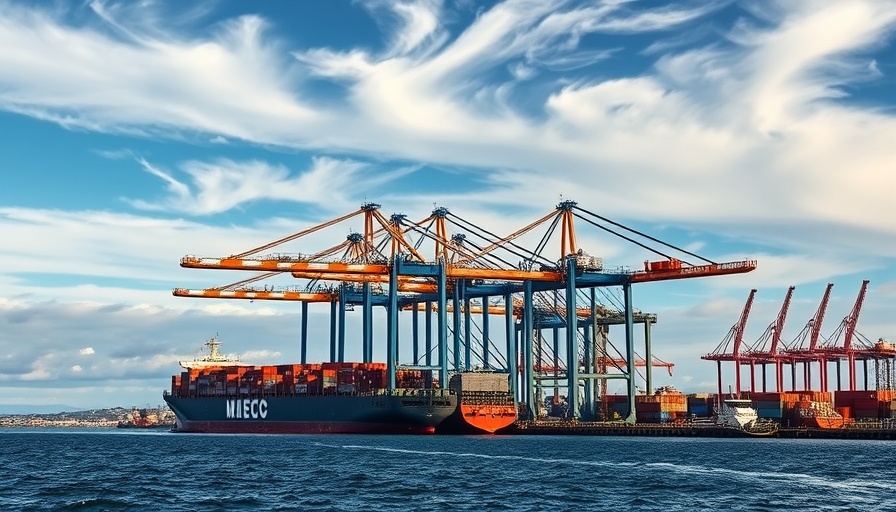
A Drop in Cargo: A Temporary Setback?
The Port of Long Beach, a crucial hub for trans-Pacific trade, reported a significant drop in cargo volumes for June, registering a 16.4% decline compared to the same month last year. This shift has raised concerns not only among port officials but also among businesses that heavily rely on timely cargo shipments. The figures, reflecting a broader trend in the shipping industry, highlight that imports fell by 16.9% to 348,681 twenty-foot equivalent units (TEUs), while exports decreased by 10.9% to 87,627 TEUs, alongside a notable 17.4% drop in empty containers.
Interplay of Tariffs and Economic Activity
Despite these challenges, there is a glimmer of hope on the horizon. Port of Long Beach CEO Mario Cordero expressed optimism for a rebound in July, driven by a temporary pause on new tariffs. This development aligns with the recent executive order signed by President Donald Trump, pushing back the implementation of certain 'reciprocal' tariffs—excluding China—until August 1. The order provides a crucial window for retailers and businesses to restock their inventories, which is vital for ensuring smooth operations ahead of peak shopping seasons.
Tariffs in Focus: What’s on the Horizon?
The looming implementation of tariffs on various countries—including Mexico and the European Union—raises questions about the future of international trade relationships. As discussions continue, the potential for increased costs on imports and the cascading effect it could have on consumers and small businesses is a critical consideration. Countries like Japan and Korea may face a levy of 25%, while others could see rates upwards of 30%.
Investment in Infrastructure: A Strategic Move
Long Beach officials remain committed to improving the port’s infrastructure with an eye towards maintaining its status as the premier gateway for cargo movement. Despite the recent downturn, the port has seen a 10.6% increase in total cargo movement over the first half of 2025 compared to the previous year, moving 4.7 million TEUs. Such resilience underscores the port’s longstanding position in the global supply chain and its ongoing investments in sustainable practices and technological updates.
Community Impact: Local Businesses Brace for Change
For residents of Bakersfield and surrounding areas, the fluctuations at the Port of Long Beach can have direct impacts on local businesses, especially those reliant on imported goods. A delay in cargo deliveries can translate to higher prices for customers and challenges for small business owners striving to keep stock levels up. Understanding these dynamics can empower consumers and entrepreneurs alike to anticipate changes and adapt accordingly.
Looking Ahead: Navigating Uncertain Waters
As we move closer to the implementation date for new tariffs, businesses and consumers need to remain vigilant. The potential changes to trade agreements could create opportunities but also uncertainties that might disrupt the current trade equilibrium. Savvy businesses will need to strategize around the evolving tariff situation to mitigate risks and capitalize on potential speed bumps in the supply chain.
Encouragingly, port officials emphasize a long-term vision of sustainability and efficiency, positioning the Long Beach Port as a critical player not just regionally but globally. The ongoing dialogue concerning tariffs and trade relationships will inevitably shape the trajectory of commerce for years to come.
As these developments unfold, stakeholders will want to stay informed and proactive in navigating changes. By understanding the nuances of the current tariff environment and its consequences on local trade operations, individuals and businesses can better prepare for both challenges and opportunities ahead.
This situation exemplifies the intricate web of global trade where local economies and international policies intersect. Adapting to these shifts will be essential for all involved as they look to foster resilience in their operations.
 Add Row
Add Row  Add
Add 



Write A Comment